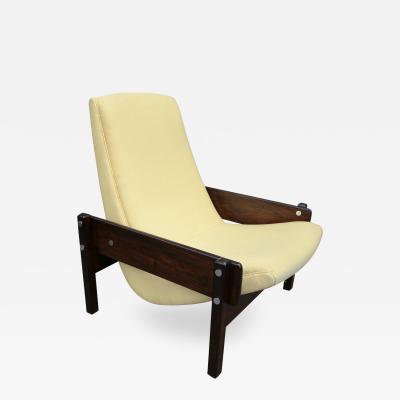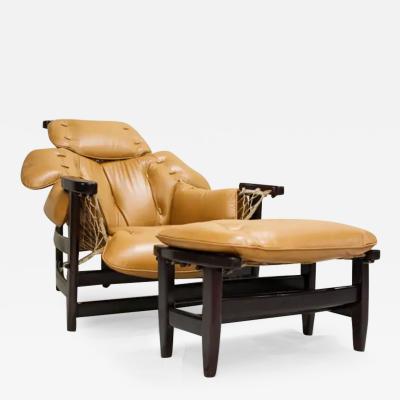Found Collectibles Brings Brazilian Modern Furniture to the United States
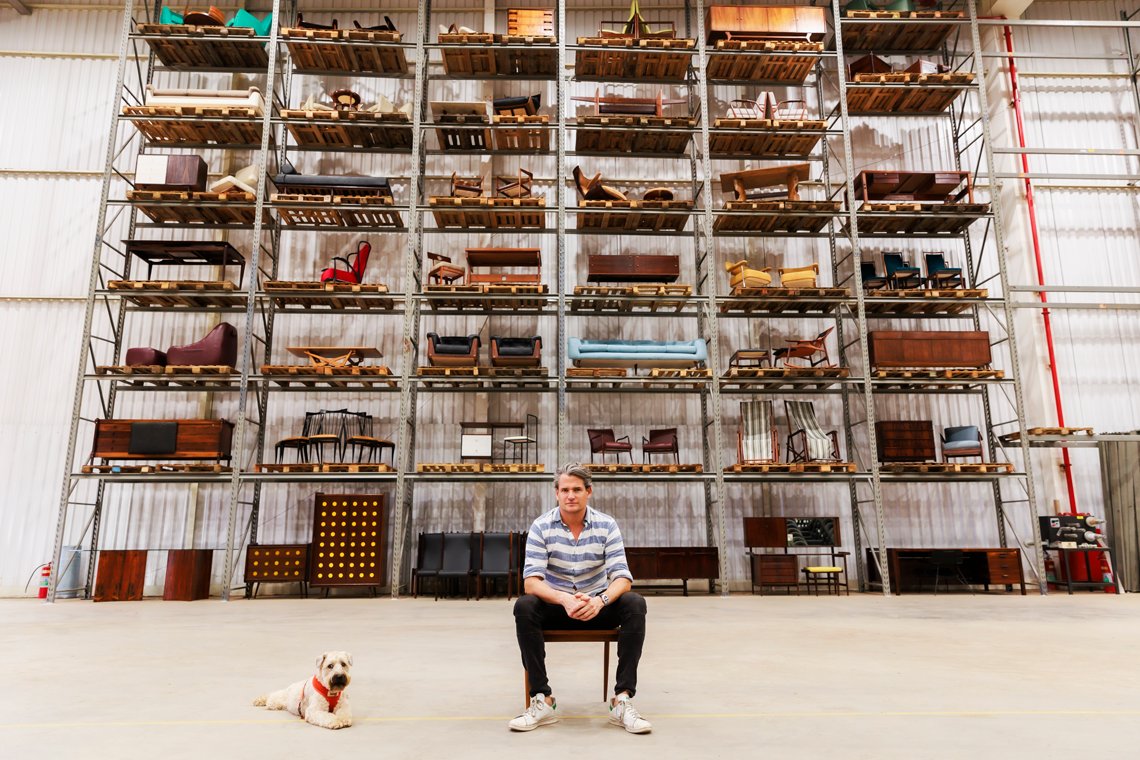 |
| Rodrigo Salem, the force behind Found Collectibles, seated before a towering “wall of design,” one of many at his warehouse in Brazil. Designers and collectors who in the past had to hunt and wait for pieces to come onto the market, can now focus on selecting the perfect piece, because Mr. Salem has assembled an extraordinarily comprehensive inventory. |
Found Collectibles Brings Brazilian Modern Furniture to the United States
By Benjamin Genocchio
 |
Rodrigo Salem is a treasure hunter with the eye of an artist, and the knowledge of a scholar. His apartment in Chelsea is filled with objects he purchased on his travels to more than 70 countries around the world over the past two decades as an executive for Microsoft and Meta. Art and furniture dominate his vast collection, which includes African artifacts, a Mole armchair by Sergio Rodrigues, and vintage Minotti seating along with paintings by Mexican Surrealists Leonora Carrington and Rufino Tamayo.
Salem is still hunting for treasures, although these days he searches and buys primarily for his latest business venture Found Collectibles, a design gallery in New York that combines his love of collecting and traveling with his knowledge of historical art and design. The business name Found Collectibles was settled on to reflect his passion for searching out unique pieces from a specific place and time — in this case, collectible Brazilian modern furniture from the 1950s through 1970s.
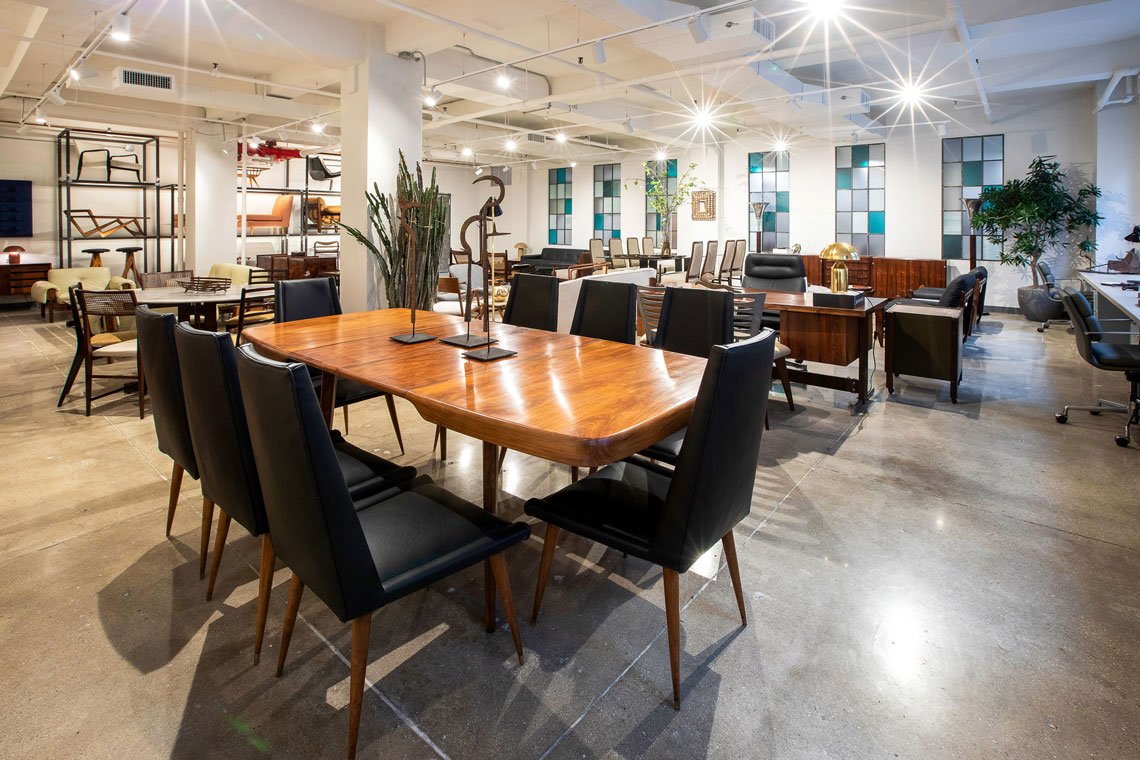 |
Found Collectibles’ gallery in New York City’s Garment District combines curated vignettes along with racks displaying individual pieces. The scope and quality of his inventory affords a rare opportunity to experience the remarkable range of Brazilian modern design. |
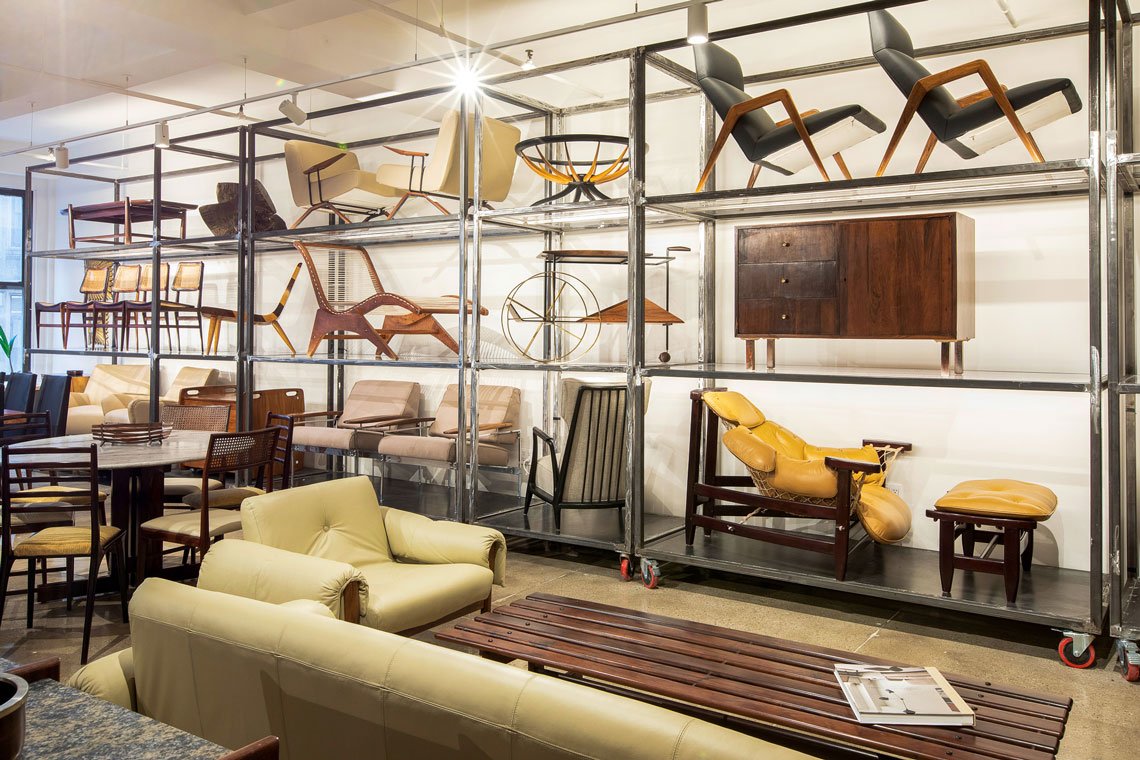 |
The period of the 1950s through 1970s is today regarded as the golden age of modern Brazilian architecture and design and material has become increasingly scarce and valuable. Salem has amassed, so far, more than 1,200 pieces of modern Brazilian furniture, a sizable collection that places him among current big collectors of the material in the United States. He stores part of it in New Jersey as well as a vast storage facility in Rio de Janeiro, where it is displayed on custom-fitted floor-to-ceiling metal racks.
 |
| A vignette combining works from renowned masters of Brazilian Modern design. From left: The Paulistana armchair with ottoman by Jorge Zalszupin, the Curva sofa by Joaquim Tenreiro, Limestone coffee table by Jorge Zalszupin, and a pair of Diz armchairs by Sergio Rodriguez. |
Salem is a collector at heart. He is Peruvian by birth but has spent a considerable amount of time in Brazil, both for vacations and business, before leaving corporate life in December 2021. He moved to the fashionable Ipanema neighborhood in Rio de Janeiro and subsequently decided he wanted to devote his time, enthusiasm, and energy to promoting Brazilian design. He started out reading and traveling to learn everything that he could and has built a network of advisors, artisans, and dealers to guide him.
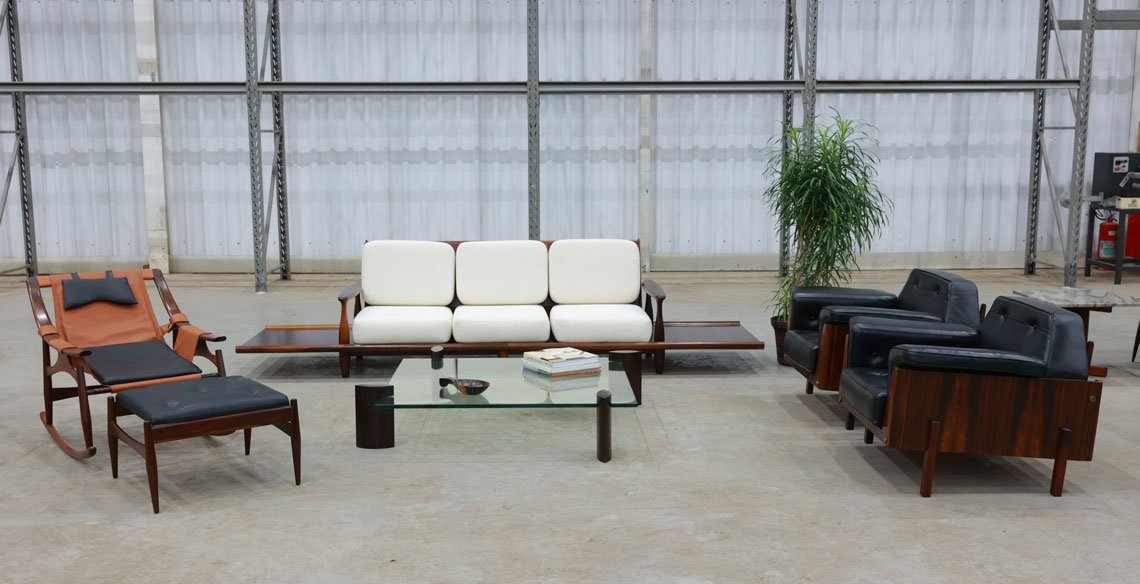 |
| Rodrigo Salem’s passion for Brazilian Modern design encompasses not only the works by the bards of the genre but also pieces designed and produced by lesser-known makers, about which he is equally ardent. In this vignette, Mr. Salem created a sophisticated and stylish grouping with a rocking chair and ottoman and a sofa with attached end tables by Liceu de Artes e Oficios; a coffee table by Fatima; and a pair of armchairs by Berthomeu. |
The collection Salem has amassed is unique not only in its scale or quality but the diversity of furniture. His acquisitions range from pieces by obvious as well as well-known designers of the period including Joaquim Tenreiro, Sergio Rodrigues, Jose Zanine Caldas, Giuseppe Scapinelli, and Jorge Zalszupin to other less-known designers such as Percival Lafer, Pierre Weckx, Jean Gillon, Geraldo de Barros, Carlo Hauner, and Alexandre Rapoport.
 |  | |
| Left: Chaise Longue for Mòveis Artísticos Z by José Zanine Caldas. Right: Three-Legged Chair by Joaquim Tenreiro | ||
 |  | |
| Left: Mole Armchair and Bench by Sergio Rodrigues. Right: "Carrinho de Chà" Tea Trolley/Bar Cart by Jorge Zalszupin. | ||
 |  | |
| Left: Romana Coffee Table by Jorge Zalszupin. Right: MP-13 Armchairs by Percival Lafer. | ||
 | 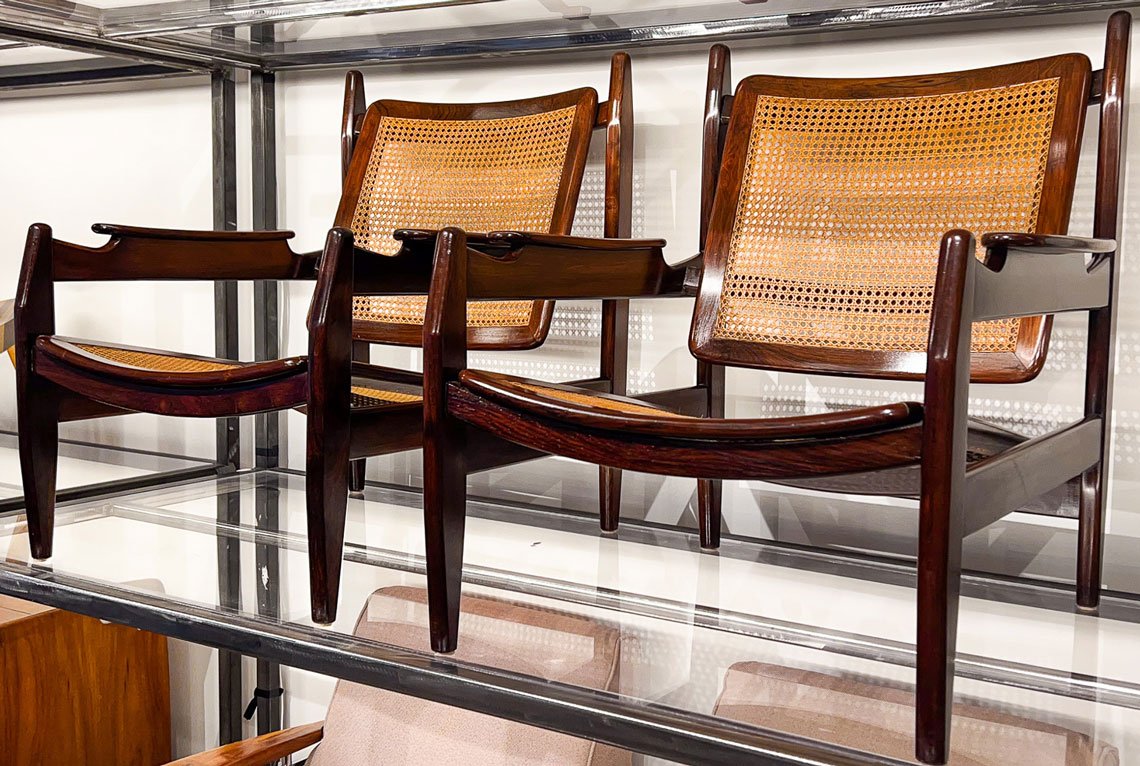 | |
| Left: Bar with Handpainted Tiles by Giuseppe Scapinelli. Right: Cane and Jacaranda Armchairs by Alexandre Rapoport. | ||
The scale of his inventory can be a little overwhelming but once you dig into the list it is clear Salem has acquired many if not most of the icons that today define this genre — the curvaceous 1949 Chaise Longue for Mòveis Artísticos Z by José Zanine Caldas, Joaquim Tenreiro's glorious Three-Legged Chair, the blissfully comfortable Mole Armchair and Bench by Sergio Rodrigues, and the classic 1959 "Carrinho de Chà" tea trolley/bar cart and Romana Coffee Table by Jorge Zalszupin. Percival Lafer is represented by his streamlined yet sumptuous MP-13 Armchairs.
 |
| Dining table and a suite of 8 dining chairs by Giuseppe Scapinelli. |
Salem's showroom is located in the Garment District area of midtown Manhattan, where he keeps a few hundred pieces of modern Brazilian design for clients to view and hosts events regularly. He has the natural zeal of a recent convert, eagerly explaining the many merits of investing in Brazilian modern furniture which he sums up as “limited quantity, unique design, and unparalleled quality.”
On display in New York are rare pieces including a spectacular bar by Giuseppe Scapinelli, a designer who emigrated from Italy and helped translate Italian design aesthetics to the Brazilian market. The Brazilian rosewood bar has a center section decorated with hand-painted tile with a colorful, abstract motif and the tiered, aerodynamic look of the period. Looking at the pieces up close gives you an instant appreciation not only for the quality of raw materials but also for the exceptional attention to craftsmanship. For example, the ball for the front foot of Zalszupin’s rolling bar cart is made of a carved piece of wood to match the overall structure. Exquisite.
 |
| Another view of the gallery in New York City. At right, a pair of armchairs in Brazilian rosewood and cane by Alexandre Rapoport, circa 1960s. The “Acqua” ebony coffee table is by Guiseppi Scapinelli, circa 1950s, and the black leather “Pullman” sofa with Brazilian rosewood buttons is by Jorge Zalszupin, circa 1970s. |
Also on display in the New York showroom are a pair of armchairs by Alexandre Rapoport, an incredibly talented designer who is underappreciated in the market for Brazilian modern furniture. The chairs are made of rosewood with surfboard-style wood armrests and, unusual for vintage pieces, retain the original caned seats and backrests in excellent condition.
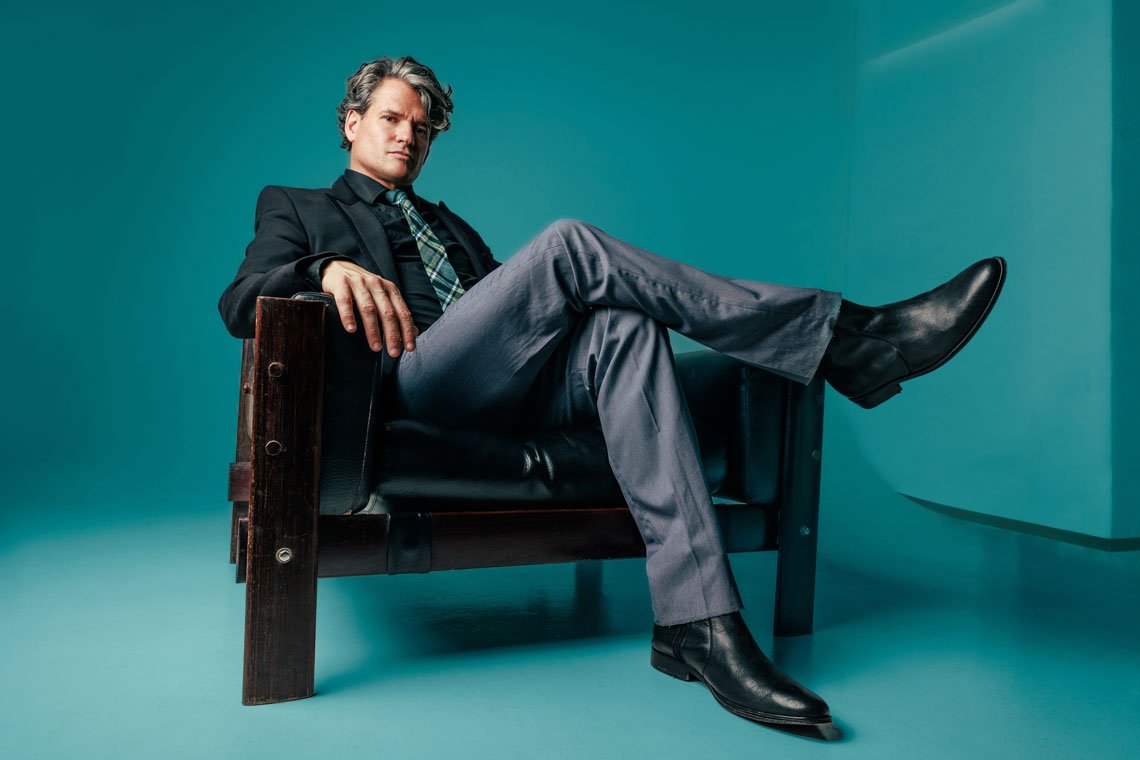 |
| Rodrigo Salem has amassed an exceptional collection of Brazilian Modern design and has become a scholar on the subject, making his gallery Found Collectibles an important resource for authentic vintage works. |
“I like to talk to people who appreciate the furniture that I appreciate,” Salem explains. He is closely involved in sourcing the pieces, having them restored, if needed, as well as packing and shipping them to the United States. “I like to have my hands on the furniture,” he says. “I think that is a strength. There is no middleman with me. I’ve sourced every piece myself, so I know where everything came from, who the owner was, which helps with the attribution, and I am upfront about whether any restoration was done.”
When restoration is needed, he works with a team of Brazilian artisans who previously worked for the original designers, including Sergio Rodrigues and Abraham Palatnik. The goal is a sensitive, respectful restoration that retains the character and quality of the original, and Salem reasons that those who worked on the original furniture are best suited to that end. All the work is done by hand in Brazil, as it was initially.
“I don't want to make it new,” he says, “I want people to know where it came from and that it has a history. So I try to keep all the original finish and patina on the woods and unlike many dealers I even prefer, if I can, to keep the original fabrics and upholstery on the furniture though this isn't always possible. But I always keep the original frame and even the springs and the internal mechanisms on chairs and sofas. This is a bit of a problem sometimes as a few of the chairs can be a little hard or too soft.”
Salem is so passionate and persuasive in recounting his own story it is easy to forget that his business is less than two years old — having started online in May 2022. But there is no denying his investment, intelligence, and marketing skills, honed to perfection as the lead executive of the Estée Lauder global account for Meta. “Story sells a product; it is all about selling a story,” he explains about his time at Meta.
He has a new story to tell and it is one the design world should listen to.
 |
Discover More From Found Collectibles on Incollect
 |

















